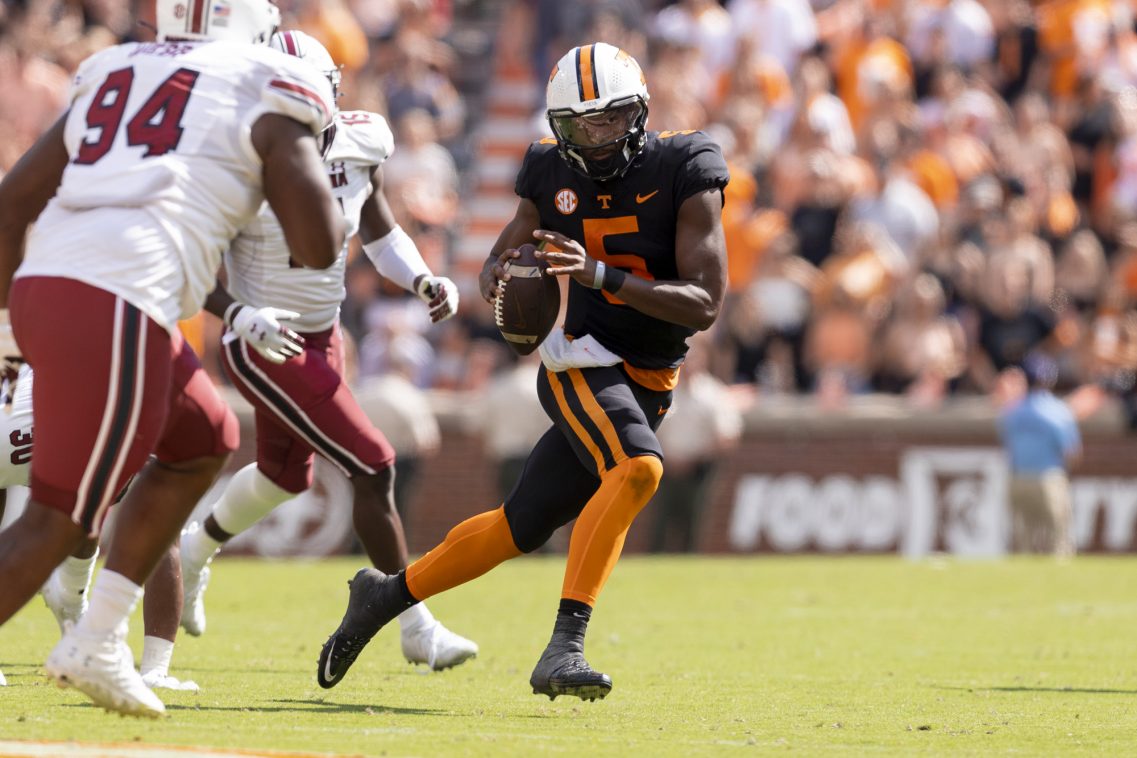Outside of the tempo-infused stats, the best thing Tennessee did last year was Hendon Hooker’s three interceptions on 303 pass attempts. That number is even more impressive considering how often Hooker was sacked.
Last season the Vols allowed 44 sacks, 124th nationally. And this too wasn’t just a function of Tennessee playing fast: 44 sacks with 376 total passing attempts (Hooker + Milton) means Vol quarterbacks went down on 10.48% of passing plays. That’s the highest total in the post-Fulmer era:
Tennessee Sack Rate Allowed 2009-2021
| Year | Sacks Allowed | Passing Att | Sack % |
| 2021 | 44 | 376 | 10.48% |
| 2020 | 29 | 285 | 9.24% |
| 2019 | 21 | 360 | 5.51% |
| 2018 | 23 | 297 | 7.19% |
| 2017 | 35 | 319 | 9.89% |
| 2016 | 25 | 379 | 6.19% |
| 2015 | 24 | 371 | 6.08% |
| 2014 | 43 | 453 | 8.67% |
| 2013 | 15 | 344 | 4.18% |
| 2012 | 8 | 477 | 1.65% |
| 2011 | 18 | 400 | 4.31% |
| 2010 | 41 | 419 | 8.91% |
| 2009 | 18 | 401 | 4.30% |
If safety in the passing game was Tennessee’s greatest strength, keeping quarterbacks upright is Tennessee’s greatest area for improvement. And just a little progress can go a very long way.
The Vols lost Cade Mays to the NFL, but bring back everyone else up front. Figuring out who wins the tackle spot opposite Darnell Wright will be a huge piece of the puzzle in fall camp.
Sacks were costly in some of Tennessee’s biggest moments last year. Before the 4th-and-24 against Ole Miss, the Vols had 1st-and-10 at midfield. But a sack and a holding penalty on consecutive plays put the Vols in the aforementioned hole. With a chance to put Kentucky away late, Hooker was sacked twice from 2nd-and-Goal at the 5, ultimately leading to a missed field goal. Driving into Georgia territory late in the third quarter, a pair of sacks ended Tennessee’s chance to keep the game within reach.
Good news: this isn’t a problem Josh Heupel’s teams had at UCF. It isn’t a function of the offense with quarterbacks holding the ball longer than usual, etc. Tennessee struggled in this department in 2020 as well, and hasn’t had a sack rate lower than 5% since the 2013 line that sent Ja’Wuan James and Zach Fulton to the NFL.
For all the good – and the great! – Tennessee’s offense did last year, there’s an opportunity for even more improvement here that could go a long way in keeping drives alive, producing even more points and even more separation. How much better will Tennessee’s pass protection be in 2022?

